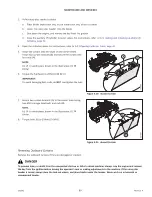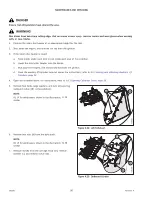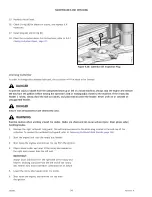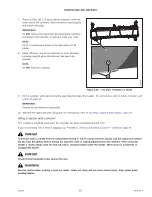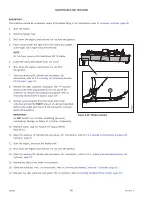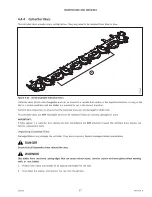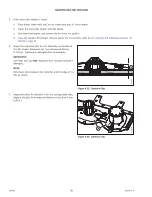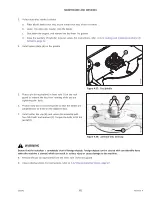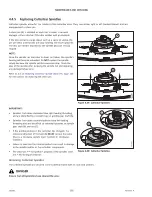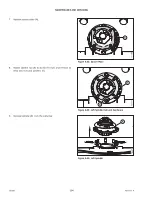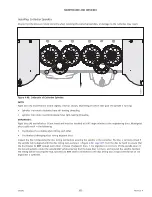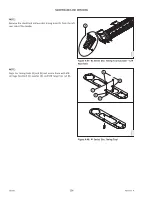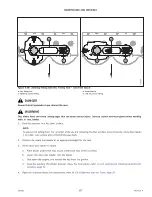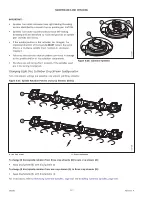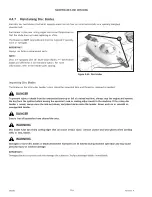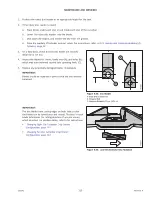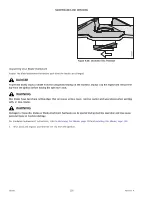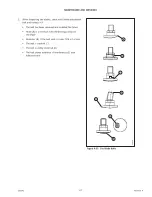
262391
102
Revision A
4.4.5
Replacing Cutterbar Spindles
Cutterbar spindles allow for the rotation of the cutterbar discs. They have either right or left-handed threads, and are
equipped with a shear pin.
1011409
A
B
Figure 4.39: Cutterbar Spindles
A shear pin (A) is installed on each disc in order to prevent
damage to the cutterbar if the disc collides with an obstacle.
If the disc contacts a large object such as a stone or stump, the
pin will shear and the disc will stop rotating and move upwards.
The disc will remain attached to the spindle because of snap
ring (B).
NOTE:
Once the spindle has risen due to shear pin failure, the spindle
’
s
bearing will become unloaded. Do
NOT
replace the spindle
simply because the spindle exhibits excessive play. Check the
play of the spindle after torquing the spindle nut and replacing
any damaged shear pins.
Refer to
4.4.13 Replacing Cutterbar Spindle Shear Pin, page 164
for instructions on replacing the shear pin.
1019153
A
B
C
Figure 4.40: Cutterbar Spindles
IMPORTANT:
•
Spindles that rotate clockwise have right-leading threading
and are identified by a smooth top on spindle gear shaft (A).
•
Spindles that rotate counterclockwise have left-leading
threading and are identified by machined grooves on spindle
gear shaft (B) and nut (C).
•
If the spindle position in the cutterbar has changed, the
rotational direction of that spindle
MUST
remain the same
(that is, a clockwise spindle must maintain its clockwise
rotation).
•
Failure to maintain the rotation pattern can result in damage
to the spindle and/or to the cutterbar components.
•
The shear pin will not perform properly if the spindles used
are in the wrong orientation.
Removing Cutterbar Spindles
The cutterbar spindles are secured to the cutterbar frame with 11 nuts and washers.
DANGER
Ensure that all bystanders have cleared the area.


